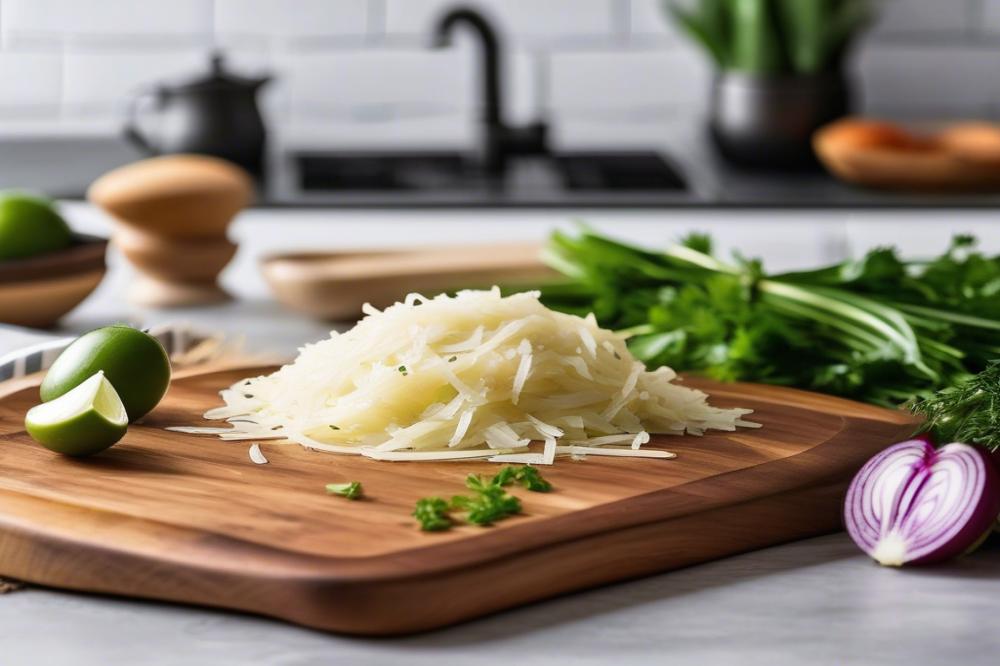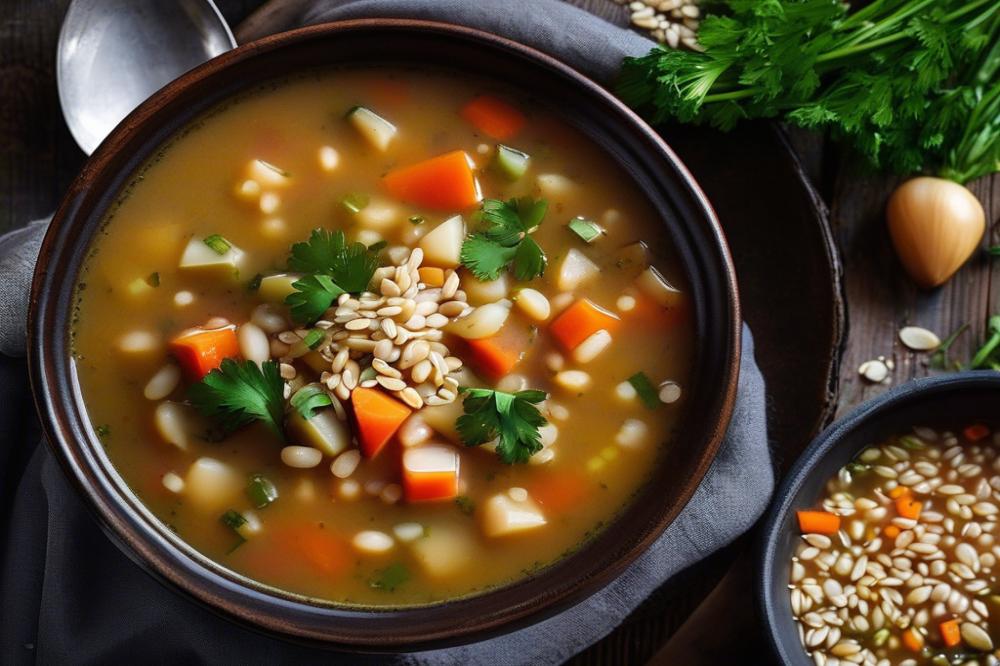Introduction
Kapusta Kiszona is more than just a dish; it is a cherished staple in Polish cuisine. This homemade sauerkraut has roots deep in tradition, often made by families who handpick the finest cabbage for their recipes. Fermented cabbage plays a significant role in many cultural dishes and is a key ingredient that brings flavor and character to numerous meals.
Creating your own sauerkraut recipe at home is an important practice in traditional Polish cooking. Making food from scratch connects people to their heritage and to each other. As generations pass down recipes, they preserve not just the taste, but the culture itself. The process of preserving vegetables through fermentation is a time-honored method that enhances the natural flavors while also extending shelf life.
Health benefits also come with homemade sauerkraut. Packed with probiotics, this fermented cabbage is a powerhouse of nutrition. Probiotic foods like sauerkraut help promote gut health and can improve digestion. So, while you may enjoy a delicious side dish, you might also be feeding your body with healthy recipes that boost your wellness.
Embrace the art of crafting Polish Sauerkraut in your kitchen. The simplicity of this easy sauerkraut recipe invites anyone, regardless of cooking skills, to give it a try. Not only does it satisfy your taste buds, but it allows you to take part in a rich tradition that continues to enrich Polish culture today.
Kapusta Kiszona: The Art of Homemade Sauerkraut

Fermentation transforms simple ingredients into something extraordinary. This time-honored process not only preserves food but also enhances its nutritional value. When cabbage ferments, it develops tangy flavors and boosts probiotics, making it a superfood. In the world of Polish cuisine, this fermented cabbage becomes a staple. Its health benefits are numerous, from aiding digestion to supporting gut health. These reasons make homemade sauerkraut an excellent choice for anyone looking to explore healthy recipes.
Crafting your own sauerkraut recipe does not require elaborate ingredients. Start with fresh, crisp cabbage; this is essential for the best results. You will also need salt, which plays a crucial role in the fermentation process. The right amount of salt controls bad bacteria while promoting the growth of good bacteria. Some people enjoy adding spices or even shredded carrots for added flavor and color. These variations can make your easy sauerkraut feel unique every time you make it.
The process of making Kapusta Kiszona is relatively straightforward. First, slice the cabbage finely, then mix it with salt. This action releases the natural juices of the cabbage. Once mixed, pack the cabbage tightly into a jar or crock, allowing it to ferment undisturbed for a few weeks. Patience is key. Over time, the flavors will deepen and develop, creating a delightful addition to any meal. It’s like an invitation to savor traditional recipes passed down through generations.
Preserving vegetables through fermentation connects us to our past. Many cultures have rich histories centered around this technique. As you embark on this culinary journey, you become part of a broader tradition. Making homemade sauerkraut is not just about the food. It’s about enhancing your meals with cultural dishes that tell a story. The joy of sharing your creations with family and friends can be just as fulfilling as the act of making it.
Incorporating probiotic foods into your diet has never been easier. This simple recipe can support your health while offering a delicious addition to your meals. So, gather your ingredients, and take part in the art of fermentation. You might find that the process becomes a cherished ritual in your kitchen. Soon enough, you’ll have a delightful jar of homemade sauerkraut, waiting to enrich your dishes in countless ways.
Ingredients and Cooking Instructions

Making your own Kapusta Kiszona at home is enjoyable and rewarding. First, let’s gather the ingredients:
- Cabbage: 1 medium head (about 3-4 pounds)
- Sea salt: 1-2 tablespoons, to taste
- Optional spices: caraway seeds and juniper berries
Cabbage is the star ingredient in this sauerkraut recipe because it provides the base for your fermented cabbage. It contains essential vitamins and minerals and forms the hearty heart of this traditional dish. Sea salt plays a crucial role in fermentation, helping to draw out moisture and create the perfect environment for good bacteria. If you want to add a little extra flavor, consider using caraway seeds or juniper berries, which complement the cabbage beautifully.
Here’s how to make your homemade sauerkraut step-by-step:
- First, remove the outer leaves of the cabbage. Chop or shred the cabbage finely. You can use a knife, a mandoline, or a food processor for this.
- In a large mixing bowl, add the shredded cabbage. Sprinkle the sea salt over the top. The salt helps to release water from the cabbage as you massage it.
- Now, massage the cabbage for about 5-10 minutes. You want to break down the leaves and let the juices flow.
- If you’re using optional spices, add them now. They’ll enrich the flavor of your sauerkraut.
- Transfer the cabbage into a clean glass jar or fermentation crock. Press it down firmly so the juices cover the cabbage. This is crucial for successful fermentation.
- Leave some space at the top of the jar. Place a weight on top of the cabbage if possible, to keep it submerged under the liquid.
- Cover the jar with a clean cloth or a lid that allows gases to escape. Store the jar in a cool, dark place.
- Fermentation will take about 1-4 weeks. Taste it periodically to find the flavor you enjoy. The longer it ferments, the tangier it will become.
As you prepare this easy sauerkraut, remember these tips for ensuring good fermentation and flavor development. Maintain a steady temperature, ideally between 65-75°F. Avoid direct sunlight, which can affect the fermentation process. If you notice any mold forming on the surface, simply skim it off. It won’t affect the overall product beneath. A clean environment is vital, as any unwanted bacteria can spoil your healthy recipes. Once your sauerkraut reaches the desired taste, transfer it to the refrigerator to slow down fermentation. This will preserve the texture and flavors of this delicious cultural dish.
Health Benefits of Kapusta Kiszona

Nutritional Breakdown of Sauerkraut
Homemade sauerkraut is low in calories and packed with nutrients. One cup typically contains around 27 calories, making it an excellent addition to any meal. You’ll find it rich in vitamins C and K. Fermented cabbage is also a good source of fiber, which assists in digestion. Just a small serving provides significant health benefits.
Discussion of Probiotic Foods and Gut Health
Fermented foods, including sauerkraut, contain probiotics. These beneficial bacteria are vital for a healthy gut. They help maintain balance in your digestive system. By consuming probiotic foods, you can support immunity and enhance digestion. Many people notice improved gut health and regularity after adding these foods to their diets.
Benefits of Consuming Fermented Cabbage in a Healthy Diet
Incorporating fermented cabbage into meals can elevate your overall health. Regular consumption may boost your mood and energy levels, thanks to the vitamins and minerals. Traditional recipes, like this sauerkraut recipe, offer a tasty way to enjoy these benefits. Many cultural dishes highlight the importance of preserving vegetables for nutrition and flavor. Easy sauerkraut can be a versatile side that complements various main courses as well.
Healthy recipes often focus on ingredients that promote well-being. Sauerkraut not only enhances flavor but also adds a nutritional punch. A balanced diet that includes fermented foods may reduce inflammation and improve metabolic health. Making homemade sauerkraut is a simple way to step up your nutrient intake and enjoy Polish cuisine at its finest.
Traditional and Cultural Significance of Kapusta Kiszona
Role of Sauerkraut in Polish Cuisine and Family Gatherings
Polish culture holds food as a centerpiece of family gatherings. Sauerkraut often appears on the table during holidays and celebrations. It connects generations, bringing families together to share stories and recipes. Home-cooked meals featuring fermented cabbage are a must during festive occasions like Christmas Eve. This delicious dish plays a vital role in preserving traditions. Families often pass down their homemade sauerkraut recipe, ensuring that the taste remains in the family.
Use of Kapusta Kiszona in Various Polish Dishes
Many Polish recipes showcase sauerkraut as a main ingredient. In bigos, also known as hunter’s stew, it complements meat and creates a hearty flavor. Pierogi stuffed with sauerkraut and mushrooms are a fan favorite. Additionally, it can enhance simple soups, providing a delightful tang. Using this fermented cabbage in everyday meals makes them special. The versatility of this ingredient shines in numerous dishes across the region.
Comparison with Other Cultural Dishes from Around the World
Fermented foods are popular in many cultures. For example, German sauerkraut has a similar base but is often served with sausages. Korean kimchi, on the other hand, incorporates spices and has a distinct kick. Each of these probiotic foods is rooted in the practice of preserving vegetables. These culinary traditions highlight the importance of fermentation in both health and flavor. Homemade sauerkraut, like its global counterparts, offers a unique taste experience filled with history.
Tips for Preserving Vegetables and Enhancing Flavor
Homemade sauerkraut offers not only taste but also health benefits, making it a great addition to any meal. To preserve this tasty fermented cabbage, use glass jars with tight-fitting lids. This method keeps the environment controlled and prevents spoilage. Store your jars in a cool, dark place, like a basement or pantry, and check them regularly. After about two to four weeks, the fermentation process will create a tangy flavor. Once you achieve your desired taste, move the jars to the refrigerator to slow down further fermentation.
Flavor enhancement is critical for a delicious dish. Adding whole spices, like caraway seeds or juniper berries, can elevate the taste of your sauerkraut recipe. Chopped garlic or diced onions can also introduce a delightful kick. If you’re feeling adventurous, experiment with other ingredients such as grated carrots or diced apples. These additions create a sweeter touch, balancing the acidity. Don’t forget about herbs like dill or bay leaves, which add depth. Feel free to adjust quantities until you find your perfect flavor balance.
Trying different cabbage varieties may yield exciting results. Green cabbage is the classic choice, but you might find savoy or red cabbage offers unique textures and flavors. Each type brings something special, from crispness to color. Mixing varieties can yield a more complex dish. You could create a rainbow mix of colors, which adds to the visual appeal of your cultural dishes. Such experimentation not only broadens your palate but also enriches your cooking skills.
When making traditional recipes, keep in mind that the freshness of vegetables greatly impacts the final product. Crisp and vibrant cabbage leads to better sauerkraut. For an easy sauerkraut, avoid overripe cabbage. Always use high-quality ingredients for the best results. Homemade sauerkraut serves not just as a tasty side, but also as a rich source of probiotic foods, contributing to gut health. So go ahead, start preserving vegetables and enjoy the wonderful world of fermented foods!
Wrapping Up the Tradition
Poland has a rich culinary history, and kapusta kiszona plays a beloved role in it. This fermented cabbage dish is more than just a side; it is a symbol of comfort and family gatherings. Many Polish households integrate it into meals, showcasing how food can connect generations. Its tangy flavor and crunchy texture make it a staple that enhances the dining experience.
Exploring this easy sauerkraut recipe can invite a slice of Polish culture into your kitchen. Making it at home is not just rewarding; it also allows you to customize flavors according to your preferences. The process of watching cabbage transform into something delicious and tangy is rather satisfying. You might discover that making this dish yourself opens up new culinary doors.
Health benefits often accompany homemade sauerkraut. Fermented foods like this offer probiotics, which are fantastic for gut health. Consuming such dishes may even boost your immune system and help with digestion. These nutrients combined with the pleasure of home cooking can enrich your overall well-being. Enjoying meals made from scratch adds an extra layer of joy and accomplishment.
Don’t hesitate to give this homemade sauerkraut a try. Your kitchen can become a hub of traditional flavors and healthful ingredients. Daring to cook something new can lead to wonderful experiences. You might just fall in love with this delicious dish and its place in your own family traditions.



